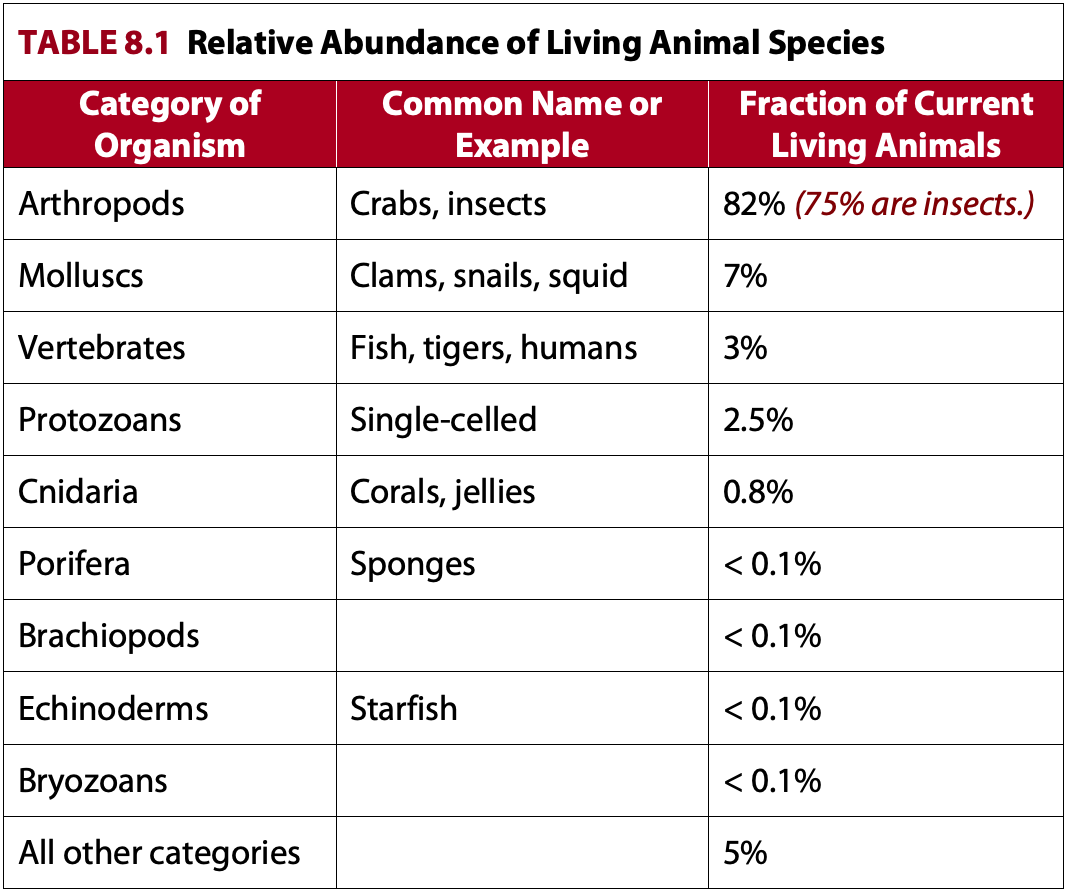Preservation Bias in the Fossil Record
The fossil record can be used for a variety of purposes: to determine the evolution of organisms over time; to infer past habitats and hence learn more about sedimentary environments; to assist with stratigraphy by helping to identify depositional environments; and to help place sedimentary rocks in time order or match rocks from one location to the next. The likelihood of any group of organisms being preserved in the fossil record is a function of: (1) its abundance relative to other organisms alive at the same time (that is, the number of individuals), and (2) its likelihood of preservation.
The fossil record must always be examined and interpreted with the potential for bias in mind. Statistically, the more individuals in a class or phylum, the more likely they will be preserved in the fossil record. For example, fossils of large terrestrial vertebrates (animals with a backbone) such as dinosaurs, mammoths and humans are perhaps the most satisfying to find or to examine, but such large mammals and top predators generally make up only a small fraction of the living species at any given time (Table 8.1).

The most common types of fossils preserved and used for stratigraphy are the less “sexy” fossils including animals without backbones (invertebrates such as clams, oysters, snails, starfish and insects) as well as plants, pollen, etc. There are many more individual organisms of these groups living at any one time, thus increasing their chance of preservation.
According to Table 8.1, Earth is inhabited by more arthropods—especially insects—than all other phyla combined. This suggests insects would dominate the fossil record, but in fact they make up only about 1% of all known fossils. This is likely because insects have an exoskeleton made of organic material that is not as well preserved as carbonate shells. In other words, insects have a low likelihood of preservation.
Terrestrial organisms live where the primary geological processes are erosion and the transport of sediments to the sea, meaning that remains are more likely to be destroyed before burial occurs. In contrast, marine environments are characterized by sediment deposition, and so on average, marine organisms are more likely to be preserved.
Conditions at the final point of deposition are also important. Shells accumulating on a beach may be broken and completely destroyed by wave action, or too much abrasion may render them unrecognizable as fossils. Thicker, more durable shells have a higher chance of persisting in this kind of environment. The effect of wave action has been studied in the laboratory by placing collections of shelled organisms in a rock tumbler (a horizontal cylinder like a very sturdy clothes dryer) and examining what remains after varying amounts of tumbling. The relative abundance of the more durable shelled organisms is greater than their true percentage in the starting community. The final assemblage remaining to be preserved is therefore biased in favour of the thicker-shelled animals. Without correcting for this effect, any analysis of the biological community would be biased.
